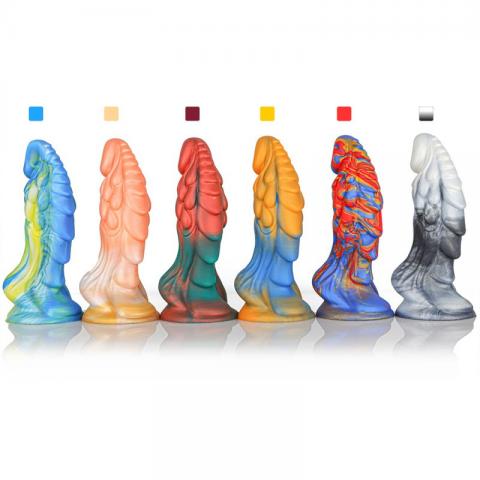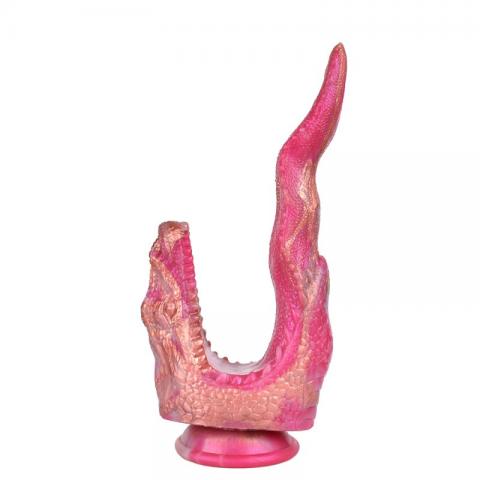Login
 USD $
USD $
 AUD AUD
AUD AUD CAD CAD
CAD CAD GBP £
GBP £ EUR €
EUR €
All Categories
(0) My Cart (0)
LambskinMushroom DildoNew ArrivalCheap
pleated filter cartridge factory
high flow filter cartridge
large flow filter cartridge
membrane pleated filter cartridge
capsule filter suppliers
capsule filter 0.2 micron
capsule filter price
capsule filter
water filter cartridge
What are the examination methods for HIV infection?
What are the examination methods for HIV infection? AIDS testing should pay attention to the window period, from the entry of HIV into the human body to produce sufficient amounts in the blood, can be used to detect HIV antibodies between this period, called the window period. Although HIV antibodies can not be detected in the window period, there is already HIV in the body, so the infected people in the window period are also infectious.
Laboratory examination
Sample collection
The most commonly used sample for AIDS testing is blood, and sometimes saliva or urine can also be used as test samples.
The collection methods of commonly used specimens are as follows:
1. Serum sample collection: 3-5ml venous blood was drawn with a syringe and naturally placed at room temperature for 1-2 hours. After the serum and clot contracted, they were centrifuged with 3000rpm for 15 minutes, and the serum was sucked out.
2. Personal protection should be paid attention to when collecting specimens to prevent the occurrence of occupational exposure.
Sample preservation and transportation
1. Preservation and transportation: serum samples should be kept below 4 ℃. If long-term preservation is needed, low temperature (- 30 ℃ to-80 ℃) is required. The transportation process should also be kept at a low temperature.
2. The preservation and transportation of samples should meet the requirements of biosafety.
Sample detection
Grass-roots AIDS testing is mainly serum antibody testing.
1. Common detection methods of primary screening experiment.
(1) enzyme-linked immunosorbent assay
(2) Gelatin particle agglutination test (PA)
2. Common detection methods for confirming experiments.
Western blotting test
3. Other detection methods: PCR
Blood routine
There are often red blood cells, hemoglobin decreased, showing mild positive pigment, positive cell anemia. White blood cells often drop to less than 4.0 × 109 ppm L. Classified neutrophils increased and nuclei shifted to the left. A few showed neutropenia. The number of lymphocytes decreased significantly, and the number of lymphocytes was more than-lt;1.0 × 109 × 10 ~ 9xL. There are plasma cell-like lymphocytes and monocytes containing vacuoles. Platelets generally have no change, once there is a change, platelets can be significantly reduced.
Immunological changes
It is mainly the change of cellular immune system, which is characterized as follows.
(1) Lymphocyte subsets examination: the number of CD4T cells decreased and the proportion of CD4/CD8 decreased. The ratio of CD4/CD8 in normal subjects was 1.75-2.1, while that in patients with acquired immunodeficiency syndrome was often-lt;1.0.
(2) T cell function decreased: delayed type allergy skin test was negative. Lymphocyte transformation decreased when stimulated by nonspecific mitogen in vitro. The cytotoxicity of T cells decreased. The production of IL-2 and IFN-γ by T cells decreased.
(3) B cell dysfunction: there were different degrees of increase of immunoglobulin and immune complex. Emergence of autoantibodies, such as the production of RF, antinuclear antibodies and anti-lymphocyte antibodies.
(4) the activity of natural killer cells decreased.
β 2-microglobulin and neopterin (neopterin)
Serum β 2-microglobulin and neopterin were measured by radioimmunoassay (RIA). They are the products of activated macrophages, and the increase of their serum level means immune activation, which has the same clinical significance as the decrease of absolute count of CD4T cells, percentage of lymphocytes and the proportion of CD4/CD8 cells, which indicates the progression of the disease to acquired immunodeficiency syndrome.
Lymph node biopsy
In the high incidence areas and high risk groups of acquired immunodeficiency syndrome, lymph node biopsy is an important measure for patients with lymph node enlargement outside the groin, especially in patients with persistent cervical lymph node enlargement. non-specific pathological manifestations such as reactive and neoplastic lesions of lymph nodes can be seen. In some patients with acquired immunodeficiency syndrome, the superficial lymph nodes disappear and it is not easy to do a biopsy.
Other
Albuminuria is often found in urine examination. Blood creatinine and urea nitrogen can be increased.
Etiological examination
PCR can be used to track the natural infection history of HIV. The virus sequence can be detected before other serological and virological markers appear, which can be used to determine the potential transmission of HIV in asymptomatic and seronegative patients; it can be used to monitor viral levels in patients with long incubation period (4-7 years) and during antiviral therapy; it can also be used to detect HIV in infants of HIV-1 seropositive mothers. Maternal antibodies are present in the blood of babies during the first 6 to 9 months after birth, so PCR can be used to determine whether the baby is actually infected with HIV.
Detection of HIV sequence in patients with positive serum antibody
DNA was prepared from peripheral blood monocyte cultures, semen cells and semen supernatants of patients with AIDS or ARC. Then HIV-1 was detected by PCR method and reverse transcriptase assay respectively. The PCR products were annealed with 32p labeled probe and digested with BstNI. Then polyacrylamide gel electrophoresis and autoradiography were performed. The results showed that 9 of 28 reverse transcriptase negative cell lines and 2 of 9 cell lines which could not be determined by reverse transcriptase method were positive. This shows that in the past, many cell cultures were thought to be negative, but in fact they were positive when measured with the more sensitive PCR.
Provirus sequence can be detected from peripheral blood mononuclear cells of HIV positive patients. The DNA prepared by co-culture and isolation of the blood of serum-positive gay men can detect the virus sequence 100% with PCR; 64% of the samples of serum-negative co-culture homosexuals were detected by PCR, and the PCR test of serum-negative normal samples was also negative, indicating that there was no false positive result. Because of the wide heterogeneity of HIV-1 genome, a variety of primers (such as LTR,gag and env gene primers) can be used to improve the positive rate of detection. HIV positive was detected in 310 of 313 antibody positive samples by PCR method.
Detection of HIV sequence in patients with negative serum antibody
Because there is a lag between infection with HIV and before the immune response occurs, this serologically negative lag is usually as long as 6 weeks to 6 months clitoral vibrator , and the antibody-free production period may be longer. During this period, infected people often do not detect antibodies, so seronegative people may also have been infected with HIV.PCR. The time of detection of HIV-1 in high-risk groups is 6 months longer than the time of serological positive diagnosis. For a small number of people who were negative in the first co-culture, they could be diagnosed with HIV-1 infection even 24-39 months before the seroconversion. If the results of serological test cannot be determined, further analysis and diagnosis can be made by PCR.
Detection of HIV sequence in newborn infants
Mothers infected with HIV and their babies are usually positive by antibody test because of the presence of maternal antibodies. But in fact, only 20% to 60% of babies are infected with HIV. Therefore, the early diagnosis of HIV infection in these infants is very important. It has been shown that 3050% of these newborns can be infected with HIV from their mothers in the womb, during delivery and induced labor, or through postpartum breastfeeding. Neonatal seropositive does not mean that it is HIV infection. Because maternal HIV antibodies can last for about 15 months. In general, babies do not show any symptoms of HIV infection. Virus cell culture is not a reliable and practical method for infants; it is impossible to detect HIV specific IgM antibodies in the presence of maternal antibodies; it is also very difficult to detect HIV antigens in serum in the presence of excessive serum antibodies. In addition, the disease of infants and young children infected by HIV develops rapidly. Early diagnosis is very important to take timely treatment measures to delay and prevent the development of the disease. The antiviral drugs currently used are so toxic that they can not be used in uninfected infants with positive HIV antibodies. However, when the HIV-DNA sequence is detected by PCR, antiviral therapy and treatment to strengthen immune function and nutrition can be carried out. In one study, 6 of 14 newborns from serum-positive mothers were positive for PCR, and 5 of 10 children with serum-negative within 12 to 15 months after birth were PCR-positive. From the newborns born one month after the birth of serum positive mothers, the peripheral blood mononuclear cells collected were detected by PCR girl butt , and 7 were positive, of which 5 were AIDS; but PCR negative 10 months after the test, and were in good health during the 16-month follow-up examination. These studies show that PCR is very important for early and direct detection of HIV-1 in newborns and serum-negative children from HIV-infected mothers.
The detection of HIV-DNA sequence by PCR plays an important role in the diagnosis of AIDS and ARC. However, some people think that it is no longer necessary to do PCR for patients who are known to be HIV antibody, antigen or culture positive. The most suitable PCR test targets are those who are suspected of HIV infection but lack exact serological evidence, such as babies born to HIV-positive mothers, sexual partners of positive patients, intravenous drug users and suspected serum responders. PCR technology can also be used to detect HIV in blood products and vaccines.
Etiological examination of HIV-1
Detection of ① HIV-1 serum antibodies: including anti-gp120 and anti-P24, most HIV-1 infected patients seroconversion within 3 months. Therefore, the determination of serum antibody is the most simple, rapid and effective method to determine whether there is HIV infection or not. The commonly used methods include enzyme-linked immunosorbent assay (ELISA), indirect immunofluorescence assay (IFA), radioimmunoassay (RIA) and so on. Generally, the ELISA method is used for preliminary examination, and its sensitivity is 99.5%. However, because it uses HIV-1 as an antigen for detection, cross-antibodies with lymphocyte antigens may be false positive. Therefore, the positive cases were confirmed by nitrocellulose membrane immunoblotting test (Westen blot,WB).
The specificity of nitrocellulose membrane hybridization test is strong, and the false positive rate is very low. The diagnostic criteria are as follows: if ELISA is positive twice in a row, and WB test shows any two positive bands in p24, gp41, gp120 or gp160, HIV infection can be confirmed. If there are no two positive bands, it can only be diagnosed as "undefined" (indeterminate pattern). At this time, polymerase chain reaction (PCR) can be used to detect its specific viral nucleic acid, or continue to observe closely and make the above tests repeatedly to confirm the diagnosis.
② detection of virus antigen: because the antibody appears later than the antigen, so it can not be diagnosed early. If blood donors are screened in the window period before anti-HIV-1 positive conversion, there will be false negative, and the consequences are very serious. Therefore, it is best to test for viral antigen in screening blood donors. Usually, the sensitivity and specificity of P24 are high. It is not only helpful for early diagnosis, but also can be used for blood donor screening and drug efficacy assessment.
③ detection of viral nucleic acid: in the window period before anti-HIV-1 positive conversion, reverse transcription polymerase chain reaction (RT-PCR) technique can also be used to detect HIV RNA. This method has higher sensitivity and shorter detection cycle, and it is also helpful for early detection, screening of blood donors and assessment of drug efficacy. But the operation must be very careful to prevent pollution in order to avoid false positive.
④ virus isolation and culture: the virus can be isolated from lymphocytes, blood, semen and other body fluids of patients with high positive rate best dildo , and the positive rate can reach 100% after repeated isolation. The isolated virus can be cultured in CD4T cells. However, the method is complex and expensive, so it is generally only used for laboratory research. Isolation or culture to HIV is the basis for diagnosis.
Etiological examination of HIV-2
Serological tests found that there was a cross reaction between about 80% of HIV- 1 and HIV-2 infections. Therefore, ELISA and RIBA methods used to detect HIV-1 infection are difficult to determine HIV-2 infection. Especially when the double infection of HIV-l and HIV-2 occurs, it makes the diagnosis more difficult. However, HIV-2-specific ELISA and WB kits are now available for sale. In HIV-2 endemic areas, based on the detection of HIV-1, HIV-1 and HIV-2 infection can be distinguished by HIV-2-specific ELISA kit, and then confirmed by HIV-2-specific WB method. In non-endemic areas, when HIV-1 test is positive or weakly positive, but WB method is not clear or negative, or clinically suspected of acquired immunodeficiency syndrome, but HIV-1 test is weakly positive and WB test is negative, HIV-2 specific ELISA kit should also be used to confirm the diagnosis.
Recently, in order to save time and money, most kit manufacturers and blood banks use the combined determination of HIV-1 and HIV-2 antibodies. The ELISA pattern of combined assay was the same as that of HIV-1 antibody assay, except that the mixture of HIV-1 and HIV- 2 antigens was used to replace the single HIV-1 antigen when the solid phase carrier was coated.
Supplementary Examination
Acquired immunodeficiency syndrome is prone to opportunistic infections and malignant tumors, and often dies of these complications. Therefore, chest and gastrointestinal X-ray examination and early diagnosis of opportunistic infection and malignant tumor are very important for timely treatment and prolonging the life of the patients.
Chest X-ray examination
Common opportunistic infections include Pneumocystis carinii pneumonia and malignant tumors such as Kaposi's sarcoma.
(1) Pneumocystis carinii pneumonia
The typical X-ray findings were as follows: mixed alveolar and interstitial inflammatory changes appeared in both lungs at the beginning, mainly with scattered reticular nodular interstitial infiltration around the hilum, extending outward from the hilum. Then, within a few days, the lesion entered the alveoli and developed into alveolar consolidation, forming a uniform patchy consolidation shadow in the lung field, with extensive or focal emphysema or small atelectasis, especially in the periphery of the lung. Rough or fine-grained "ground glass" manifestations, lesions can be limited to one lung lobe, or diffuse distribution. Sometimes flaky shadows can be fused into large patches of uniform and dense infiltrating shadows, showing concentric distribution, which is very similar to the X-ray features of pulmonary edema. Nodular lesions can also be seen in the "ground glass" background. There can also be striped shadows around the lungs sexshop , and some only show coarse nodular shadows. However, these X-ray findings are not specific, and the diagnosis requires repeated fiberoptic bronchoscopy to find the pathogen. Atypical X-ray findings include pulmonary lobar consolidation, but one lobe can also be multi-lobed consolidation, pulmonary cavity formation or pleural effusion, alveolar exudate can also be calcified and so on. It should be distinguished from pulmonary tuberculosis or pulmonary fungal infection. The intrathoracic lymph nodes were enlarged, mainly located in the mediastinum, the right trachea and both sides of the hilum of the lung. Some cases even had no respiratory symptoms, but only showed enlarged lymph nodes in the chest on the X-ray, which was later confirmed as acquired immunodeficiency syndrome. Such X-ray findings strongly suggest that there is a serious infection or tumor in the lung and fiberoptic bronchoscopy or lymph node biopsy is needed.
(2) Kaposi's sarcoma
The most common X-ray abnormality is pulmonary interstitial infiltration, which accounts for about 80% of patients with Kaposi's sarcoma of the lung. In addition, the diameter of the lung field-lt;1cm, the boundary is not clear multiple nodular shadow and obvious strip shadow. It is often accompanied by enlargement of mediastinal and hilar lymph nodes and pleural effusion. When the X-ray findings are not obvious, CT is helpful for the diagnosis.
X-ray examination of digestive tract
The main pathogen of gastrointestinal opportunistic infection is cytomegalovirus, and Kaposi's sarcoma is still the most common malignant tumor.
(1) cytomegalovirus infection
Cytomegalovirus can invade any part of the gastrointestinal tract, but the colon is the most common, and the entire gastrointestinal tract can be involved in individual cases. Cytomegalovirus esophagitis or gastritis showed mucosal fold swelling, small filling defect and superficial ulcer or erosion on X-ray. There are two types of cytomegalovirus colitis: sporadic and focal. Sporadic lesions invade the whole gastrointestinal tract, but to varying degrees. Barium enema showed that the colon bag disappeared, the intestinal cavity was slightly narrow, and the intestinal mucosa could have granuloma, erosion and superficial ulcer. The segmental cases mainly invaded the cecum and terminal ileum. X-ray radiography showed cecal spasm, irregular thickening of mucosal folds and superficial thrush-like ulcers, but should be distinguished from the X-ray findings of ulcerative colitis and Crohn's disease. The above X-ray findings are non-specific and should be analyzed in combination with clinical data. If necessary, endoscopy and biopsy should be used to confirm the diagnosis.
(2) Kaposi's sarcoma
Kaposi's sarcoma can occur anywhere in the gastrointestinal tract. Kaposi's sarcoma of the esophagus showed multiple intraluminal Polypoid lesions in the middle of the esophagus on X-ray. Gastric Kaposi's sarcoma presents as a scattered, multiple sessile submucosal defect at the distal end of the stomach, with a smooth outline and a diameter of a few millimeters to a few centimeters. Barium accumulates in the center of a few lesions, showing a "bull's eye sign", and irregularly thickened mucosal folds can also be seen in the inflated and dilated stomach. Kaposi's sarcoma of the duodenum is a bulbar submucosal nodule or mild patchy eminence. Kaposi's sarcoma of the small intestine is multiple nodules with central ulcers. Kaposi's sarcoma of the colon is most obvious in the rectum, showing a nodular filling defect scattered under the mucous membrane of the colon, ranging from a few millimeters to a few centimeters in diameter. In more advanced patients, nodules fused and circular infiltration of the intestinal wall led to rectal stenosis and rigidity.
Realistic dildo | best vibrator | pvc dildo | fat pocket pussy
Laboratory examination
Sample collection
The most commonly used sample for AIDS testing is blood, and sometimes saliva or urine can also be used as test samples.
The collection methods of commonly used specimens are as follows:
1. Serum sample collection: 3-5ml venous blood was drawn with a syringe and naturally placed at room temperature for 1-2 hours. After the serum and clot contracted, they were centrifuged with 3000rpm for 15 minutes, and the serum was sucked out.
2. Personal protection should be paid attention to when collecting specimens to prevent the occurrence of occupational exposure.
Sample preservation and transportation
1. Preservation and transportation: serum samples should be kept below 4 ℃. If long-term preservation is needed, low temperature (- 30 ℃ to-80 ℃) is required. The transportation process should also be kept at a low temperature.
2. The preservation and transportation of samples should meet the requirements of biosafety.
Sample detection
Grass-roots AIDS testing is mainly serum antibody testing.
1. Common detection methods of primary screening experiment.
(1) enzyme-linked immunosorbent assay
(2) Gelatin particle agglutination test (PA)
2. Common detection methods for confirming experiments.
Western blotting test
3. Other detection methods: PCR
Blood routine
There are often red blood cells, hemoglobin decreased, showing mild positive pigment, positive cell anemia. White blood cells often drop to less than 4.0 × 109 ppm L. Classified neutrophils increased and nuclei shifted to the left. A few showed neutropenia. The number of lymphocytes decreased significantly, and the number of lymphocytes was more than-lt;1.0 × 109 × 10 ~ 9xL. There are plasma cell-like lymphocytes and monocytes containing vacuoles. Platelets generally have no change, once there is a change, platelets can be significantly reduced.
Immunological changes
It is mainly the change of cellular immune system, which is characterized as follows.
(1) Lymphocyte subsets examination: the number of CD4T cells decreased and the proportion of CD4/CD8 decreased. The ratio of CD4/CD8 in normal subjects was 1.75-2.1, while that in patients with acquired immunodeficiency syndrome was often-lt;1.0.
(2) T cell function decreased: delayed type allergy skin test was negative. Lymphocyte transformation decreased when stimulated by nonspecific mitogen in vitro. The cytotoxicity of T cells decreased. The production of IL-2 and IFN-γ by T cells decreased.
(3) B cell dysfunction: there were different degrees of increase of immunoglobulin and immune complex. Emergence of autoantibodies, such as the production of RF, antinuclear antibodies and anti-lymphocyte antibodies.
(4) the activity of natural killer cells decreased.
β 2-microglobulin and neopterin (neopterin)
Serum β 2-microglobulin and neopterin were measured by radioimmunoassay (RIA). They are the products of activated macrophages, and the increase of their serum level means immune activation, which has the same clinical significance as the decrease of absolute count of CD4T cells, percentage of lymphocytes and the proportion of CD4/CD8 cells, which indicates the progression of the disease to acquired immunodeficiency syndrome.
Lymph node biopsy
In the high incidence areas and high risk groups of acquired immunodeficiency syndrome, lymph node biopsy is an important measure for patients with lymph node enlargement outside the groin, especially in patients with persistent cervical lymph node enlargement. non-specific pathological manifestations such as reactive and neoplastic lesions of lymph nodes can be seen. In some patients with acquired immunodeficiency syndrome, the superficial lymph nodes disappear and it is not easy to do a biopsy.
Other
Albuminuria is often found in urine examination. Blood creatinine and urea nitrogen can be increased.
Etiological examination
PCR can be used to track the natural infection history of HIV. The virus sequence can be detected before other serological and virological markers appear, which can be used to determine the potential transmission of HIV in asymptomatic and seronegative patients; it can be used to monitor viral levels in patients with long incubation period (4-7 years) and during antiviral therapy; it can also be used to detect HIV in infants of HIV-1 seropositive mothers. Maternal antibodies are present in the blood of babies during the first 6 to 9 months after birth, so PCR can be used to determine whether the baby is actually infected with HIV.
Detection of HIV sequence in patients with positive serum antibody
DNA was prepared from peripheral blood monocyte cultures, semen cells and semen supernatants of patients with AIDS or ARC. Then HIV-1 was detected by PCR method and reverse transcriptase assay respectively. The PCR products were annealed with 32p labeled probe and digested with BstNI. Then polyacrylamide gel electrophoresis and autoradiography were performed. The results showed that 9 of 28 reverse transcriptase negative cell lines and 2 of 9 cell lines which could not be determined by reverse transcriptase method were positive. This shows that in the past, many cell cultures were thought to be negative, but in fact they were positive when measured with the more sensitive PCR.
Provirus sequence can be detected from peripheral blood mononuclear cells of HIV positive patients. The DNA prepared by co-culture and isolation of the blood of serum-positive gay men can detect the virus sequence 100% with PCR; 64% of the samples of serum-negative co-culture homosexuals were detected by PCR, and the PCR test of serum-negative normal samples was also negative, indicating that there was no false positive result. Because of the wide heterogeneity of HIV-1 genome, a variety of primers (such as LTR,gag and env gene primers) can be used to improve the positive rate of detection. HIV positive was detected in 310 of 313 antibody positive samples by PCR method.
Detection of HIV sequence in patients with negative serum antibody
Because there is a lag between infection with HIV and before the immune response occurs, this serologically negative lag is usually as long as 6 weeks to 6 months clitoral vibrator , and the antibody-free production period may be longer. During this period, infected people often do not detect antibodies, so seronegative people may also have been infected with HIV.PCR. The time of detection of HIV-1 in high-risk groups is 6 months longer than the time of serological positive diagnosis. For a small number of people who were negative in the first co-culture, they could be diagnosed with HIV-1 infection even 24-39 months before the seroconversion. If the results of serological test cannot be determined, further analysis and diagnosis can be made by PCR.
Detection of HIV sequence in newborn infants
Mothers infected with HIV and their babies are usually positive by antibody test because of the presence of maternal antibodies. But in fact, only 20% to 60% of babies are infected with HIV. Therefore, the early diagnosis of HIV infection in these infants is very important. It has been shown that 3050% of these newborns can be infected with HIV from their mothers in the womb, during delivery and induced labor, or through postpartum breastfeeding. Neonatal seropositive does not mean that it is HIV infection. Because maternal HIV antibodies can last for about 15 months. In general, babies do not show any symptoms of HIV infection. Virus cell culture is not a reliable and practical method for infants; it is impossible to detect HIV specific IgM antibodies in the presence of maternal antibodies; it is also very difficult to detect HIV antigens in serum in the presence of excessive serum antibodies. In addition, the disease of infants and young children infected by HIV develops rapidly. Early diagnosis is very important to take timely treatment measures to delay and prevent the development of the disease. The antiviral drugs currently used are so toxic that they can not be used in uninfected infants with positive HIV antibodies. However, when the HIV-DNA sequence is detected by PCR, antiviral therapy and treatment to strengthen immune function and nutrition can be carried out. In one study, 6 of 14 newborns from serum-positive mothers were positive for PCR, and 5 of 10 children with serum-negative within 12 to 15 months after birth were PCR-positive. From the newborns born one month after the birth of serum positive mothers, the peripheral blood mononuclear cells collected were detected by PCR girl butt , and 7 were positive, of which 5 were AIDS; but PCR negative 10 months after the test, and were in good health during the 16-month follow-up examination. These studies show that PCR is very important for early and direct detection of HIV-1 in newborns and serum-negative children from HIV-infected mothers.
The detection of HIV-DNA sequence by PCR plays an important role in the diagnosis of AIDS and ARC. However, some people think that it is no longer necessary to do PCR for patients who are known to be HIV antibody, antigen or culture positive. The most suitable PCR test targets are those who are suspected of HIV infection but lack exact serological evidence, such as babies born to HIV-positive mothers, sexual partners of positive patients, intravenous drug users and suspected serum responders. PCR technology can also be used to detect HIV in blood products and vaccines.
Etiological examination of HIV-1
Detection of ① HIV-1 serum antibodies: including anti-gp120 and anti-P24, most HIV-1 infected patients seroconversion within 3 months. Therefore, the determination of serum antibody is the most simple, rapid and effective method to determine whether there is HIV infection or not. The commonly used methods include enzyme-linked immunosorbent assay (ELISA), indirect immunofluorescence assay (IFA), radioimmunoassay (RIA) and so on. Generally, the ELISA method is used for preliminary examination, and its sensitivity is 99.5%. However, because it uses HIV-1 as an antigen for detection, cross-antibodies with lymphocyte antigens may be false positive. Therefore, the positive cases were confirmed by nitrocellulose membrane immunoblotting test (Westen blot,WB).
The specificity of nitrocellulose membrane hybridization test is strong, and the false positive rate is very low. The diagnostic criteria are as follows: if ELISA is positive twice in a row, and WB test shows any two positive bands in p24, gp41, gp120 or gp160, HIV infection can be confirmed. If there are no two positive bands, it can only be diagnosed as "undefined" (indeterminate pattern). At this time, polymerase chain reaction (PCR) can be used to detect its specific viral nucleic acid, or continue to observe closely and make the above tests repeatedly to confirm the diagnosis.
② detection of virus antigen: because the antibody appears later than the antigen, so it can not be diagnosed early. If blood donors are screened in the window period before anti-HIV-1 positive conversion, there will be false negative, and the consequences are very serious. Therefore, it is best to test for viral antigen in screening blood donors. Usually, the sensitivity and specificity of P24 are high. It is not only helpful for early diagnosis, but also can be used for blood donor screening and drug efficacy assessment.
③ detection of viral nucleic acid: in the window period before anti-HIV-1 positive conversion, reverse transcription polymerase chain reaction (RT-PCR) technique can also be used to detect HIV RNA. This method has higher sensitivity and shorter detection cycle, and it is also helpful for early detection, screening of blood donors and assessment of drug efficacy. But the operation must be very careful to prevent pollution in order to avoid false positive.
④ virus isolation and culture: the virus can be isolated from lymphocytes, blood, semen and other body fluids of patients with high positive rate best dildo , and the positive rate can reach 100% after repeated isolation. The isolated virus can be cultured in CD4T cells. However, the method is complex and expensive, so it is generally only used for laboratory research. Isolation or culture to HIV is the basis for diagnosis.
Etiological examination of HIV-2
Serological tests found that there was a cross reaction between about 80% of HIV- 1 and HIV-2 infections. Therefore, ELISA and RIBA methods used to detect HIV-1 infection are difficult to determine HIV-2 infection. Especially when the double infection of HIV-l and HIV-2 occurs, it makes the diagnosis more difficult. However, HIV-2-specific ELISA and WB kits are now available for sale. In HIV-2 endemic areas, based on the detection of HIV-1, HIV-1 and HIV-2 infection can be distinguished by HIV-2-specific ELISA kit, and then confirmed by HIV-2-specific WB method. In non-endemic areas, when HIV-1 test is positive or weakly positive, but WB method is not clear or negative, or clinically suspected of acquired immunodeficiency syndrome, but HIV-1 test is weakly positive and WB test is negative, HIV-2 specific ELISA kit should also be used to confirm the diagnosis.
Recently, in order to save time and money, most kit manufacturers and blood banks use the combined determination of HIV-1 and HIV-2 antibodies. The ELISA pattern of combined assay was the same as that of HIV-1 antibody assay, except that the mixture of HIV-1 and HIV- 2 antigens was used to replace the single HIV-1 antigen when the solid phase carrier was coated.
Supplementary Examination
Acquired immunodeficiency syndrome is prone to opportunistic infections and malignant tumors, and often dies of these complications. Therefore, chest and gastrointestinal X-ray examination and early diagnosis of opportunistic infection and malignant tumor are very important for timely treatment and prolonging the life of the patients.
Chest X-ray examination
Common opportunistic infections include Pneumocystis carinii pneumonia and malignant tumors such as Kaposi's sarcoma.
(1) Pneumocystis carinii pneumonia
The typical X-ray findings were as follows: mixed alveolar and interstitial inflammatory changes appeared in both lungs at the beginning, mainly with scattered reticular nodular interstitial infiltration around the hilum, extending outward from the hilum. Then, within a few days, the lesion entered the alveoli and developed into alveolar consolidation, forming a uniform patchy consolidation shadow in the lung field, with extensive or focal emphysema or small atelectasis, especially in the periphery of the lung. Rough or fine-grained "ground glass" manifestations, lesions can be limited to one lung lobe, or diffuse distribution. Sometimes flaky shadows can be fused into large patches of uniform and dense infiltrating shadows, showing concentric distribution, which is very similar to the X-ray features of pulmonary edema. Nodular lesions can also be seen in the "ground glass" background. There can also be striped shadows around the lungs sexshop , and some only show coarse nodular shadows. However, these X-ray findings are not specific, and the diagnosis requires repeated fiberoptic bronchoscopy to find the pathogen. Atypical X-ray findings include pulmonary lobar consolidation, but one lobe can also be multi-lobed consolidation, pulmonary cavity formation or pleural effusion, alveolar exudate can also be calcified and so on. It should be distinguished from pulmonary tuberculosis or pulmonary fungal infection. The intrathoracic lymph nodes were enlarged, mainly located in the mediastinum, the right trachea and both sides of the hilum of the lung. Some cases even had no respiratory symptoms, but only showed enlarged lymph nodes in the chest on the X-ray, which was later confirmed as acquired immunodeficiency syndrome. Such X-ray findings strongly suggest that there is a serious infection or tumor in the lung and fiberoptic bronchoscopy or lymph node biopsy is needed.
(2) Kaposi's sarcoma
The most common X-ray abnormality is pulmonary interstitial infiltration, which accounts for about 80% of patients with Kaposi's sarcoma of the lung. In addition, the diameter of the lung field-lt;1cm, the boundary is not clear multiple nodular shadow and obvious strip shadow. It is often accompanied by enlargement of mediastinal and hilar lymph nodes and pleural effusion. When the X-ray findings are not obvious, CT is helpful for the diagnosis.
X-ray examination of digestive tract
The main pathogen of gastrointestinal opportunistic infection is cytomegalovirus, and Kaposi's sarcoma is still the most common malignant tumor.
(1) cytomegalovirus infection
Cytomegalovirus can invade any part of the gastrointestinal tract, but the colon is the most common, and the entire gastrointestinal tract can be involved in individual cases. Cytomegalovirus esophagitis or gastritis showed mucosal fold swelling, small filling defect and superficial ulcer or erosion on X-ray. There are two types of cytomegalovirus colitis: sporadic and focal. Sporadic lesions invade the whole gastrointestinal tract, but to varying degrees. Barium enema showed that the colon bag disappeared, the intestinal cavity was slightly narrow, and the intestinal mucosa could have granuloma, erosion and superficial ulcer. The segmental cases mainly invaded the cecum and terminal ileum. X-ray radiography showed cecal spasm, irregular thickening of mucosal folds and superficial thrush-like ulcers, but should be distinguished from the X-ray findings of ulcerative colitis and Crohn's disease. The above X-ray findings are non-specific and should be analyzed in combination with clinical data. If necessary, endoscopy and biopsy should be used to confirm the diagnosis.
(2) Kaposi's sarcoma
Kaposi's sarcoma can occur anywhere in the gastrointestinal tract. Kaposi's sarcoma of the esophagus showed multiple intraluminal Polypoid lesions in the middle of the esophagus on X-ray. Gastric Kaposi's sarcoma presents as a scattered, multiple sessile submucosal defect at the distal end of the stomach, with a smooth outline and a diameter of a few millimeters to a few centimeters. Barium accumulates in the center of a few lesions, showing a "bull's eye sign", and irregularly thickened mucosal folds can also be seen in the inflated and dilated stomach. Kaposi's sarcoma of the duodenum is a bulbar submucosal nodule or mild patchy eminence. Kaposi's sarcoma of the small intestine is multiple nodules with central ulcers. Kaposi's sarcoma of the colon is most obvious in the rectum, showing a nodular filling defect scattered under the mucous membrane of the colon, ranging from a few millimeters to a few centimeters in diameter. In more advanced patients, nodules fused and circular infiltration of the intestinal wall led to rectal stenosis and rigidity.
Realistic dildo | best vibrator | pvc dildo | fat pocket pussy

- Power Clit Cock Ring
- $2.58
Read More huge dildo
Subscribe for Join Us!
Subcribe to get $10 OFF for order.
- Information
- About us
- Contact us
- Customer Service
- Privacy Policy
- Return Policy
- Shopping Guide
- Payment Methods
- Products
- Dildos
- Vibrators
- Penis Pumps
- Masturbation Cup
- Love Egg
- Contact Us
- [email protected]
- Room 1003, Chevalier House, 188 Chatham Road South, Tsim Sha Tsui, Kowloon, Hong Kong
CopyRight © wlovew.com 2002-2025













-
Follow Us On WhatsApp
My Cart (0)
Follow Us On WhatsApp












